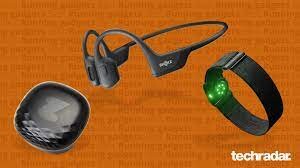Running News Daily
Running News Daily is edited by Bob Anderson. Send your news items to bob@mybestruns.com Advertising opportunities available. Train the Kenyan Way at KATA Kenya and Portugal owned and operated by Bob Anderson. Be sure to catch our movie A Long Run the movie KATA Running Camps and KATA Potato Farms - 31 now open in Kenya! https://kata.ke/
Index to Daily Posts · Sign Up For Updates · Run The World Feed
What Makes Training High-Quality—or Not?
All the digital training data in the world may not tell you whether your workout was any good
The next frontier in training science, currently being debated in publications like the International Journal of Sports Physiology and Performance, sounds like it was torn from the pages of Robert Pirsig’s 1974 road novel, Zen and the Art of Motorcycle Maintenance. Pirsig’s narrator is obsessed to the point of madness with the seemingly intractable question of how we know what is good. “Some things are better than others,” he proclaims, “that is, they have more quality.” That’s true of training, too, according to Norwegian sports scientist Thomas Haugen: some workouts are better than others, in ways that aren’t necessarily indicated by stats like pace, power, heart rate, and cadence.

Earlier this year, Haugen, a professor at Kristiania University College in Oslo, published a paper with colleagues attempting to transform this observation into a more concrete definition of training quality—and suggesting ways that athletes and coaches can improve it. It’s a riddle Haugen has been contemplating since the 1990s, when he was a sprinter and an assistant coach with legendary sprint guru Leif Olav Alnes, who currently coaches Karsten Warholm, the world record holder in the 400-meter hurdles. “One of the things I observed was that all other sprint groups in Norway tried to copy our training program, without achieving the same progress and success,” Haugen says. “That made me realize that the training program itself was of limited importance.”
What does it mean, then, when you complete a training session feeling that it was a great—or at least high-quality—workout? The easy answer is that you went faster, lifted heavier, or felt less effortful than you had in comparable workouts. But that’s a trap. Hammering your workouts at the wrong time can blow up a season and torpedo your competitive goals. When Australian researchers interviewed elite swimmers to understand how they viewed training quality, their answers were more nuanced. A common theme, in the words of one of the study’s participants, was “whether you’re hitting the times you’re supposed to be hitting”—that is, not necessarily going faster, but nailing the intended pace.
The swimmers also emphasized less quantifiable quality benchmarks like “feeling my stroke” and “feeling determined and driven.” On that basis, the researchers, led by Stephanie Shell of the Australian Institute of Sport, proposed a Subjective Training Quality scale that asks athletes to rate, from one to ten, their agreement with three statements: I met my physical training objectives in this session; I met my technical training objectives in this session; and I was mentally and emotionally engaged in this session. The STQ, Shell and her colleagues suggest, could be incorporated into training logs alongside conventional metrics like pace and subjective effort, offering a reminder of how well you’re doing at following your workout plan.
There’s a gap in the STQ, though, as Haugen and his colleagues point out. What if you do an amazing job of following your plan, but your plan is bad? Part of high-quality training is having workouts that are well chosen for a given athlete at a given time working toward a given goal. And even with a good plan, rigidly observing it doesn’t always make sense. “Based on how you felt today, was the easy long run slightly too fast?” Haugen asks. “Or, if you felt really good on the intervals, why didn’t you add two or three more to the session?”
In their paper, Haugen and his colleagues define training quality as “the degree of excellence related to how the training process or training sessions are executed to optimize adaptations and/or improve overall performance.” It’s hard to argue with so general a definition, but it’s also tricky to figure out how to make practical use of it. How do I assess whether this morning’s fartlek was very good, very bad, or somewhere in between for my overall performance in a race a few months from now?
Haugen’s practical advice focuses on three key windows. Before a workout, you should be clear about the purpose of the session; make sure you’re properly fueled, hydrated, and equipped; and get yourself in the right head space. During the workout, you need to monitor how well you’re adhering to your goals, whether with a smartwatch or by tracking subjective effort; make adjustments based on how you’re feeling; and stay focused, fueled, and hydrated. After the workout, you need to recover well and—perhaps most crucially—debrief and assess how the workout went in relation to your goals. “The best practitioners have established a culture of continuous learning,” Haugen and his coauthors write.
The great cliché of the Strava age, borrowed from corporate management gurus, is that what gets measured gets managed. But even the business world knows that isn’t the full story. Management writer Simon Caulkin suggests a qualification: “even when it’s pointless to measure and manage it.” Much of the fire hose of training data that our wearables collect could be said to fall into this category. But the broadest definitions of training quality land at the opposite end of the spectrum, so vague and generic in their guidance that they risk being ignored. To manage training quality, or at least keep it on our radar, maybe we do need something to measure.
A useful option is the STQ; a simpler one is the intention-execution gap: How close did you come to doing what you meant to do in the workout? You could quantify this with average pace, power, or heart rate. But the easiest and most generalizable option is your subjective perception of effort. How hard, on a ten-point scale, is the workout supposed to be? And how hard did you actually push? This approach works whether you’re in the gym or on the bike, out for hours or crushing short intervals. It adjusts for whether you’re feeling better or worse than expected. It gives you a quick and easily understandable metric for whether you pushed yourself to the degree your training plan called for. And if you start noticing a pattern of big misses, it tells you that you’ve got a problem.
Haugen recognizes the benefit of tracking some quantifiable quality metrics. But that is just part of the story, he says. The core of training quality is, well, qualitative. “This involves a strong sense of ownership of the training process, motivation, dedication, determination, and training intelligence,” he says. These are the characteristics that athletes and coaches spend a career or perhaps a lifetime pursuing, and they don’t lend themselves to checklists and shortcuts. But they matter. Training quantity is nothing without training quality—and for now, the best way to improve quality might be to keep arguing about what it means. After all, as Robert Pirsig pointed out, “If no one knows what it is, then for all practical purposes it doesn’t exist.”
by Outside Online
Login to leave a comment




